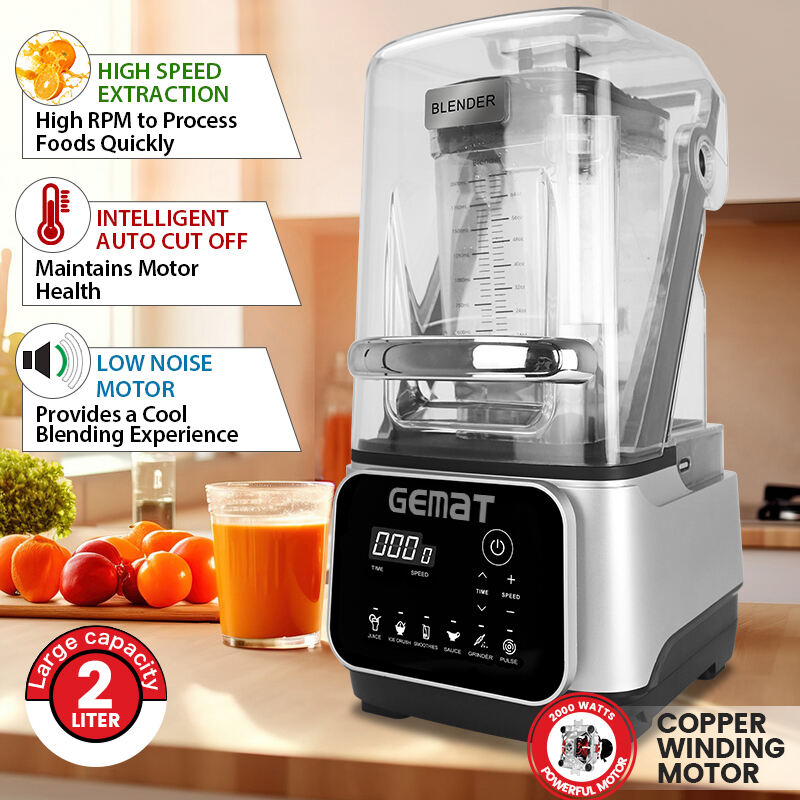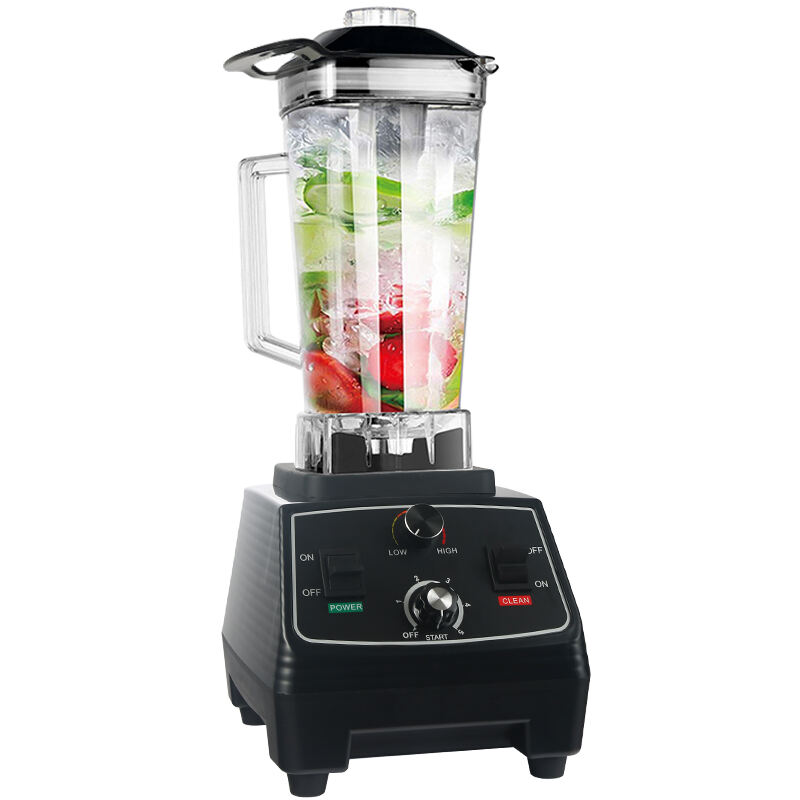Understanding the Power of Modern Kitchen Blending Technology
The blender machine has revolutionized food preparation, becoming an indispensable tool in both home and professional kitchens. This versatile appliance transforms how we approach cooking, food processing, and beverage creation, making once-tedious tasks effortless and time-efficient. From creating silky smoothies to preparing homemade sauces, the blender machine has proven itself as a true kitchen workhorse.
Modern blender machines combine sophisticated engineering with user-friendly features, enabling anyone to achieve professional-quality results. The technology behind these devices has evolved significantly, incorporating powerful motors, precision-crafted blades, and innovative container designs that work in harmony to deliver exceptional blending performance.
Core Components of a Blender Machine
The Motor Base and Power System
At the heart of every blender machine lies its motor, the powerhouse that drives the entire operation. Modern blenders typically feature motors ranging from 300 to 2,000 watts, with high-performance models boasting even more power. The motor base houses this crucial component, along with the control interface and internal cooling systems that prevent overheating during extended use.
Advanced blender machines incorporate variable speed settings and pre-programmed functions, allowing users to adjust the blending intensity precisely. The motor's power is transmitted through a coupling system that connects to the blade assembly, ensuring smooth and consistent operation regardless of the ingredients being processed.
Blade Assembly and Design
The blade assembly is a masterpiece of engineering, featuring multiple stainless steel blades arranged in specific patterns to create optimal blending vortexes. High-end blender machines often utilize hardened steel alloys that maintain their sharpness and resist dulling, even when processing tough ingredients like ice or frozen fruits.
The blade design typically includes both sharp and blunt edges, each serving distinct purposes. Sharp edges slice through ingredients, while blunt edges create turbulence that pulls ingredients down toward the blades, ensuring thorough processing. This combination results in consistently smooth blends and reduces the need for manual intervention during operation.
Advanced Features and Time-Saving Technologies
Smart Programming and Auto-Sensing
Modern blender machines come equipped with intelligent programming that takes the guesswork out of food preparation. These smart features can detect the thickness of ingredients and automatically adjust blending patterns and speeds accordingly. Some models even include built-in timers and automatic shut-off functions, allowing users to multitask while blending.
The latest blender machines also incorporate touch-screen interfaces and wireless connectivity, enabling users to access recipes, track nutritional information, and even control their blender remotely through smartphone apps. These technological advancements significantly reduce preparation time and ensure consistent results with every use.
Container Design and Material Innovation
The container design plays a crucial role in blending efficiency. Modern blender machines feature containers made from high-grade materials like BPA-free Tritan copolyester or thermal-resistant glass. The shape of these containers is carefully engineered to create a perfect vortex that pulls ingredients toward the blades for thorough processing.
Many contemporary blender machines include specially designed tampers and measuring marks on their containers, further streamlining the preparation process. Some models even offer interchangeable containers optimized for different tasks, from single-serve smoothie cups to large-capacity pitchers for batch processing.

Maintenance and Optimization Tips
Cleaning and Care Procedures
Maintaining a blender machine properly is essential for its longevity and optimal performance. Most modern units feature self-cleaning programs that make maintenance quick and straightforward. Simply add warm water and a drop of dish soap, run the cleaning cycle, and rinse thoroughly. This process takes mere minutes and helps prevent ingredient buildup that could affect blending quality.
Regular inspection of blade assemblies and gaskets ensures all components remain in perfect working order. Many blender machines now include dishwasher-safe parts, further reducing cleaning time and effort. Proper storage and handling of the appliance also contribute to its durability and consistent performance.
Performance Optimization Strategies
To maximize the efficiency of a blender machine, understanding ingredient loading order is crucial. Starting with liquids creates a vortex that helps pull other ingredients toward the blades. Adding ingredients in proper sequence ensures smooth operation and reduces processing time significantly.
Using the appropriate speed settings for different ingredients also optimizes blending results. Soft ingredients require lower speeds, while frozen items benefit from higher power settings. Many users find that brief pulse actions, rather than continuous blending, can achieve better results with certain ingredients while preventing overprocessing.
Frequently Asked Questions
How long should I expect my blender machine to last?
A quality blender machine, when properly maintained, typically lasts between 5 to 10 years. High-end models with more robust construction and powerful motors can exceed this lifespan, often serving reliably for 15 years or more with regular maintenance and appropriate use.
Can a blender machine replace other kitchen appliances?
Modern blender machines are incredibly versatile and can perform many functions traditionally handled by food processors, coffee grinders, and even ice cream makers. While they may not completely replace specialized appliances, they can significantly reduce the need for multiple kitchen tools, saving both space and money.
What is the best way to prevent overheating in a blender machine?
To prevent overheating, avoid running your blender machine continuously for extended periods. Use the pulse function when appropriate, and allow the appliance to rest between batches. Many modern blenders include automatic thermal protection, but following recommended usage guidelines will help ensure optimal performance and longevity.
 Zhongshan city HaiShang Electric Appliances Co,. Ltd
Zhongshan city HaiShang Electric Appliances Co,. Ltd



